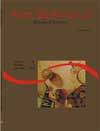<b>Weak relation between genetic and biological diversity of natural populations of <em>Trypanosoma cruzi</em></b> - DOI: 10.4025/actascibiolsci.v28i2.1044
Abstract
This paper studies the relation between genetic and biological diversity of natural populations of Trypanosoma cruzi (in Parana State, Brazil) isolated from humans (H), classified as T. cruzi II, and from sylvatic reservoirs (G) and triatomines (T), classified as T. cruzi I. Twenty-five biological parameters were evaluated concerning the kinetic of growth and of metacyclogenesis in mediums LIT and M16, to the infectivity to BALB/c mice, and to the susceptibility to benznidazole. The data support the conclusion of a weak relation between genetic distance and biological diversity using strains. The statistical comparison of the means of each parameter, with regard to the different hosts, showed that group T. cruzi II (H) was significantly different from group T. cruzi I (G and/or T) in 13 of the 25 parameters studied: group H differed from G and T in three parameters, and from G or T in 10 parameters. The major differences found in those parameters were related to the kinetic of growth and of metacyclogenesis. One biological implication from these differences is that the lowest growth of parasite observed in group T. cruzi II (H) makes parasitological diagnoses more difficult and provides lower pathogenicity for mice.Downloads
Download data is not yet available.
Published
2008-03-07
How to Cite
Andó, M. H., Bértoli, M., Toledo, M. J. de O., Gomes, M. L., Guedes, T. A., & Araújo, S. M. (2008). <b>Weak relation between genetic and biological diversity of natural populations of <em>Trypanosoma cruzi</em></b> - DOI: 10.4025/actascibiolsci.v28i2.1044. Acta Scientiarum. Biological Sciences, 28(2), 169-176. https://doi.org/10.4025/actascibiolsci.v28i2.1044
Issue
Section
Parasitology
DECLARATION OF ORIGINALITY AND COPYRIGHTS
I Declare that current article is original and has not been submitted for publication, in part or in whole, to any other national or international journal.
The copyrights belong exclusively to the authors. Published content is licensed under Creative Commons Attribution 4.0 (CC BY 4.0) guidelines, which allows sharing (copy and distribution of the material in any medium or format) and adaptation (remix, transform, and build upon the material) for any purpose, even commercially, under the terms of attribution.
Read this link for further information on how to use CC BY 4.0 properly.
0.6
2019CiteScore
31st percentile
Powered by 

0.6
2019CiteScore
31st percentile
Powered by 











1.png)




3.png)













